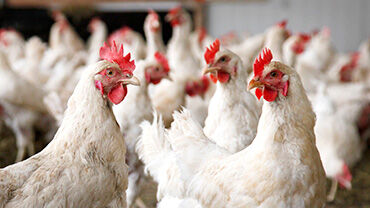Survey report on laboratory capacity for molecular diagnosis and characterisation of zoonotic influenza viruses in human specimens in EU/EEA and the Western Balkans
The aim of this survey was to review the expertise, capabilities and capacities for detection and characterisation of avian and other zoonotic influenza viruses in national influenza reference laboratories in the European Union/European Economic Area (EU/EEA), in members of the European Reference Laboratories for influenza (ERLI- Net), and in EU Enlargement policy countries. Thirty-three ERLI-net laboratories from all EU/EEA countries and three laboratories from the Western Balkan region (i.e. Albania, Kosovo, Montenegro) participated in the survey. Timely detection and characterisation of zoonotic influenza infection human cases are crucial to interrupt the spread of the viruses causing them.
Executive Summary
Overall, all but one of the participating laboratories reported a substantial level of expertise, capability and capacity to detect avian and other zoonotic influenza viruses in human specimens, and the majority (69%) can also genetically characterise the viruses. In addition, more than half of the laboratories (63%) can isolate the zoonotic influenza viruses and one third of the laboratories can further antigenically characterise those viruses.
The key findings are summarised below:
- The vast majority of participating ERLI-Net laboratories in EU/EEA countries (93%) and two out of three laboratories from the participating Western Balkan countries are receiving specimens for testing or for confirmation of positive tests performed elsewhere from exposed people when there is suspicion of zoonotic influenza virus infection.
- Importantly, most participating laboratories (78%) reported that there is collaboration between the human and animal health sectors that is crucial for an effective response if there are human cases of zoonotic influenza virus infections.
- All but one participating laboratory from EU/EEA and Western Balkans reported that they are able to perform RT-PCR for the detection and identification of A(H5) and A(H7) avian influenza viruses, while 21 are also able to detect A(H9) or other subtypes. More than half of the reporting laboratories (56%) are performing NA subtyping. Overall, there is a variability in the assays/methods used for detection of zoonotic influenza viruses in human specimens in the different laboratories. The availability of positive control material for the RT-PCR assays does not seem to be an issue.
- The majority of the laboratories (69%) indicated that they have the capabiliy and capacity to perform whole genome sequencing for unsubtypable influenza A viruses, H5 influenza A viruses or other zoonotic influenza viruses.
- All laboratories that are performing sequencing stated they are uploading sequences in real time in a public repository. Nine laboratories indicated that they have restrictions with data sharing due to national regulations, GDPR or other institutional data protection practices. As sharing of data is crucial for an effective response to outbreaks and epidemics of zoonotic influenza viruses, it is important to explore ways to overcome potential GDPR issues or other institutional data protection practices that may prohibit timely data sharing.
- Importantly, a high proportion of participating laboratories (72%) reported that they are equipped with BSL3 facilities for virus isolation and handling of highly pathogenic viruses.
- The majority of laboratories that are receiving human specimens with suspicion of zoonotic influenza (76%) are using dedicated physical facilities. This is in order to separate the handling of zoonotic and seasonal influenza clinical specimens for molecular diagnostics and/or storage. Other laboratories implement other precautions, such as separating laboratories into different sections, adding decontamination/disinfection steps, using other facilities in veterinary laboratories or inactivating clinical specimens. There appears however to be limited harmonisation in the selection of facility types and/or other precautions used for the different methods (e.g. BSL3, BSL2 with additional precautions, BSL2). Guidelines for the development and sharing of laboratory techniques and standard operating procedures could be useful for harmonisation and for laboratories to further develop their capabilities.
- Twenty-two laboratories (63%) are performing isolation of avian influenza viruses, and half of those are able to assess the antigenic relatedness to candidate vaccine viruses/reference viruses. Lack of ferret antisera and reference strains is a significant impediment to expanding the capacity to performing antigenic characterisation in additional EU/EEA laboratories, as only three laboratories mentioned they have access to such materials. There is also a lack of access to reference material for population immunity studies. Extended collaborations with international organisations and existing influenza networks could further facilitate the exchange and distribution of reference material.
- Twenty-three laboratories (64%) indicated they have the capability and capaciy to perform genotypic antiviral susceptibility testing and out of those, the majority (n=18, 78%) have the capability and capacity to also perform phenotypic antiviral resistance testing for neuraminidase inhibitors.
- As the requirement and awareness level of the regulations related to import/export permits and other restrictions for working with human specimens with a suspicion of zoonotic influenza viruses are diverse, awareness training organised both at the national and international levels would be needed to facilitate international collaboration.
- Overall, external quality assessment (EQA) and bioinformatic ring trials to prepare for diagnosis of zoonotic influenza viruses from human specimens are well appreciated and sought-after by the countries. ECDC and the WHO Regional Office for Europe are providing laboratory support and planning for EQAs and other zoonotic influenza-related activities. National reference laboratories for influenza are encouraged to participate in those activities.
- Harmonisation of methods and good laboratory practices can be facilitated via the laboratory support that ECDC and the WHO Regional Office for Europe provide to the national reference influenza laboratories, that include training and technical support.
i This designation is without prejudice to positions on status and is in line with UNSCR 1244/1999 and the ICJ Opinion on the Kosovo declaration of independence.








